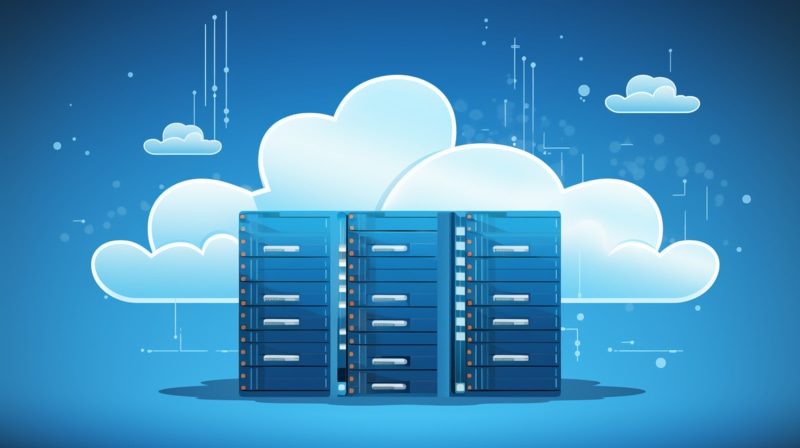Looker Interview Questions
Due to Looker’s powerful capabilities and user-friendly design, organizations of all sizes find it to be an attractive solution. Furthermore, as data scientists and analysts become more valuable assets on the job market, Looker competency has seen exponential growth as employers seek candidates skilled at its use.
Let’s dive in together and discover Looker’s universe! Let’s embark upon this voyage together!

1. What is Looker?
Looker is a bi-platform provided by Google that can be used for various purposes. It is at the core of Looker, a proprietary modelling language called LookML, which generates abstracted SQL for its skill and provides a modelling layer.
2. What does Looker do?
Looker is a complete data platform on Google Cloud that allows for in-depth data analysis, integration of insights across different data sources, actionable data-driven workflows, and custom data applications.
3. What is Looker used for?
Looker is used for various purposes, such as business intelligence (BI) applications in retail, telecom, media and entertainment, healthcare, and financial services.
4. What is the data lake in Looker?
The data lake in Looker is where data analysts can use structured query languages (SQL) to query and derive insights from various data sources, including transactional data and external data from sources like ads and social media.
5. What does Looker address?
Looker addresses the issue of business users, especially executives and leadership, who may not be familiar with SQL by generating SQL queries for users and providing a user-friendly interface that allows them to access the information they need without knowing the underlying data structure.
6. Who uses Looker?
Leading companies like Sony, Amazon, IBM, Spotify, and over 1,600 industry-leading innovative companies use Looker.
7. What is LookML?
LookML is a data looker modelling language that generates abstracted SQL and provides a modelling layer between the database and the user.
It allows users to define their custom vocabulary and catalogue business metrics, providing a simplified view of the data.
8. What features does Looker have?
Looker has various features, including security, user-defined vocabulary and catalogue, SQL dialect support, and the ability to deploy applications and roll back if necessary.
9. What is the interface of Looker?
Looker is cloud-based and available online, with no download required. The interface can be embedded in web applications or used to create a custom UI layer.
10. What is LookML used for?
LookML is used to define custom vocabulary and catalogue business metrics, providing a simplified view of the data for users who may not have technical skills and are using familiar terms.
11. What is a model in LookML?
A model in LookML is a set of explorers together with a group.
12. What is a view in LookML?
A view in LookML is a database table or logical representation of one, and each view contains dimensions and measures.
13. What are Looker’s actions?
Looker actions is a feature that makes it easier to build workflows with Looker.
14. What is QwikLabs?
QwikLabs is a site where users can create a free account to explore various labs for Looker.

Looker Training

The bottom-up approach in creating a dashboard using Looker involves creating fundamental components and adding them to a dashboard.
The data view includes dimensions and measures, including aggregate functions like count, max, and min.
16. How can users customise the view in a dashboard using Looker?
Users can customise the view in a dashboard using Looker by selecting the visualisation tab and choosing the type of block they want to use. They can customise the view by adding a title, colour, or style.
17. Can users share, schedule, and send data using Looker?
Using Looker’s collaborative features, users can share, schedule, and transmit data.
18. What SQL is used to generate data in Looker?
The SQL used to generate data in Looker is the same as that used for other data sources, and advanced measures have an optimised SQL.
19. What is the difference between Looker’s hosted and self-hosted options?
Looker’s hosted and self-hosted options differ regarding the user’s needs.
The hosted option provides real-time dashboards and other endpoints for embedding dashboards in web applications or using the APMI to generate reports.
The self-hosting setup allows users to host Looker on their infrastructure.
20. What types of data sources does Looker support?
Looker supports all types of data sources, not just SQL Server, and has prebuilt blocks that allow users to get data from proprietary platforms, SFTC, SAP, and other popular platforms.
21. What is the Looker modelling language?
The Looker modelling language is a script similar to JSON and similar to YAML. It is not a high-level programming language but a configurable language that developers can customise. The platform is open to developers who can modify it as needed.
22. What are the customisation options available in Looker?
There are numerous customisation options available in Looker, including QwikLabs. The platform is user-friendly and adaptable for various users.
23. What other options are available for users looking to use Looker for their data collection needs?
Both Google’s and Microsoft’s Power BI products are available for users looking to use Looker for their data collection needs.
24. What are some of the visualisations available in Looker?
Some visualisations available in Looker include Sankey, Donut Multiples, Flute Maps, and more.
25. What types of analytic blocks are available in Looker?
Looker offers various analytic blocks, including looker blocks, data connections, looker for enterprise, e-commerce media, SSAS healthcare gaming fintech, departments, and databases.
26. What is a measure in LookML?
A measure in LookML aggregates values like count or average.
27. What primary purpose does Looker serve in Business Intelligence?
Looker allows in-depth data analysis, integrates insights from diverse data sources, and drives actionable data-driven workflows and custom data applications.
28. What does Looker’s user interface allow users without SQL knowledge to accomplish?
The user interface of Looker generates SQL queries, allowing users access to information without knowing the underlying data structure or SQL.
29. How many SQL dialects is Looker compatible with?
Looker supports almost 50+ SQL dialects.
30. What is a Looker-Mell project, and what does it typically map to?
A Looker-Mell project is a higher-level object that maps to a data source or a Data Base (DB) connection.

Looker Online Training

31. What is located at the core of Looker that facilitates tasks like configuring dashboards and explorers?
The Looker layer, which abstracts the database, facilitates tasks for the end users, like configuring dashboards and explorers.
32. What analytical blocks does Looker provide that can be used for enhanced data analytics?
Looker provides analytical blocks that can be used to query data on shared data sources like Google BigQuery or SFDC.
33. What is one key feature of Looker that ensures security in data analytics?
One key feature of Looker ensuring security in data analytics is that it enables transaction rollbacks, code reviews, and collaborative features for developers.

34. What kind of deployments does Looker support?
Looker supports both hosted and self-hosted deployment options.
35. How does Looker assist companies in leveraging their data across different business segments?
Looker stimulates operational workflows to put data to work on every business segment through dashboard configuration, interactive visualisations, and custom applications.
36. What feature distinguishes Looker’s blocks from other simple analytics tools?
Looker’s blocks can be used to build sophisticated dashboards and feature workflow integrations, such as triggering notifications and creating SMS.
Use our MCQs area to test your knowledge and prepare for those challenging interview questions.
1. What is the name of the proprietary modelling language used by Looker to generate abstracted SQL?
a) DataML
b) LookSQL
c) SQLML
d)
2. Which of the following is NOT part of the analytical blocks provided by Looker?
a)
b) Data blocks
c) Visualization blocks
d) Source blocks
3. Which feature allows Looker to permit multiple users to work collaboratively at the development level?
a) Real-time dashboard embedding
b) Transparent SQL generation
c)
d) Auto-generated schema detection
4. Looker’s LookML can do all of the following EXCEPT:
a)
b) Aggregate calculations
c) Define data relationships
d) Describe dimensions
5. Which type of assistance does Looker pricing specialists offer customers?
a) Recommendations on Visualizations to use
b)
c) Troubleshooting technical Looker issues
d) Guidance on database schema design
6. What kind of compliance does Looker support?
a)
b) FISMA
c) PCI DSS
d) GLBA
7. Which of the following is not listed as a Looker block type?
a)
b) Visualization
c) Source
d) Analytic
As is evident by our interview questions, Looker is becoming an indispensable asset to companies striving to make data-driven decisions. Through an in-depth examination, we examined its various features and functions that allow companies to leverage data analytics effectively.
We hope that this blog has assisted in your preparations for an interview and provided you with insight into Looker’s creative skillsets.

Looker Course Price


Ankita
Author